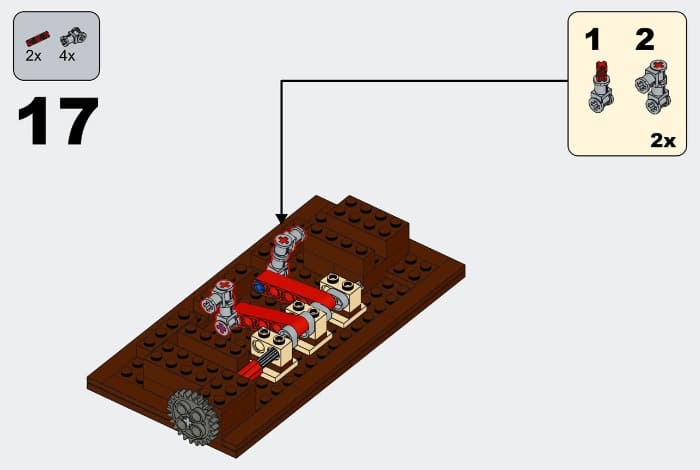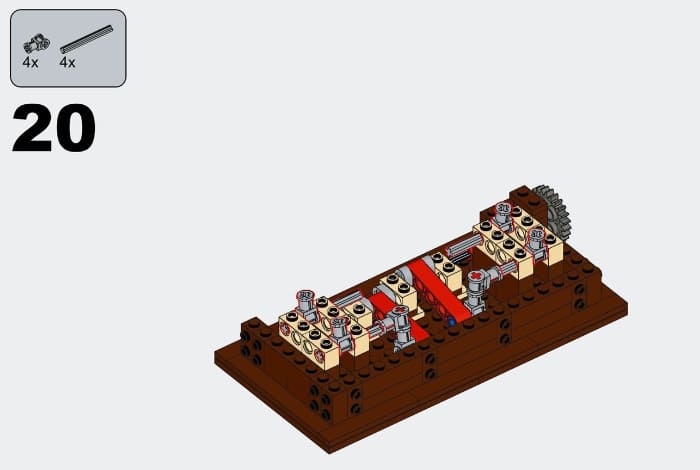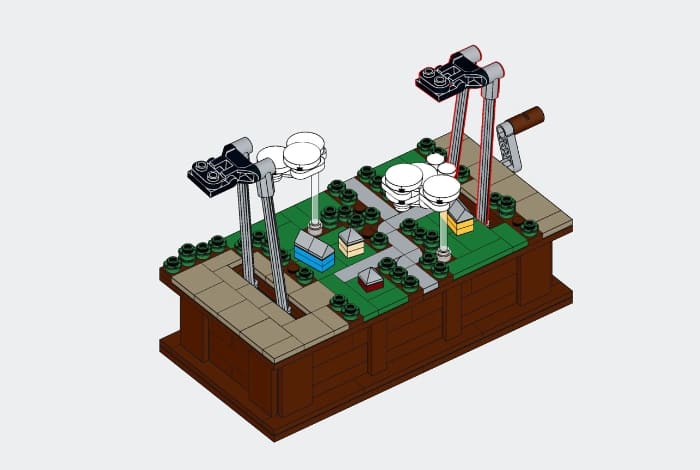(Written by William)
As we discussed previously, LEGO decided to release some of the rejected LEGO Ideas projects that achieved 10k votes via the BrickLink Designed Program (you can read about the selection and crowdfunding process via the links at the end of this post. A couple of weeks ago, we reviewed the #910016 LEGO Sheriff’s Safe designed by Il Buono (see: Brick Breakdown: LEGO BrickLink Set – Sheriff’s Safe), and today, we will take a look at the #910028 LEGO Pursuit of Flight set by JKBrickWorks.

I’m a huge fan of Jason Allemann, a.k.a. JKBrickWorks. Blending engineering skills with artistic sculpting, he manages to create models that elevate LEGO building. So, when two of his projects were selected for the BrickLink Designer Program, I backed them both during the crowdfunding phase (although due to the rules, only the Pursuit of Flight made it into production).

Unfortunately, the sets released in the early rounds of the BrickLink designer program are no longer available directly from LEGO, and picking them up via the secondary market requires paying hefty prices. However, the good news is that the instructions are readily available, and most of the sets require no special parts, so you should be able to build them yourself. And the Pursuit of Flight is definitely worth building! The moving parts are especially interesting, so let’s take a closer look!
LEGO PURSUIT OF FLIGHT – CREATING A SWAY MOTION
Mechanically, most kinetic sculptures made out of LEGO bricks involve circular motion. The reason for this is that circular motion is the easiest to supply a continuous amount of. In other words, if you only pushed a button or toggled a lever, once you finish that motion, that would be the end of the experience. However, if you could continually crank a handle or hook something up to a rotary motor, then the action would go as long as you desire. For this reason, it is an ideal way to build a kinetic sculpture.

But what do you do when what you want moving is clearly not circular by design? That’s when we dig into all the tricks to transform and direct circular motion into something we desire. In the case of the Pursuit of Flight model, we want a plane to sway from side to side.

First, before we do anything, we need to determine what will hold the plane up. For this, two axles are used. Sure, you could use a single axle for this purpose, but if your goal is to have additional movement, you will need two distinct elements. A driving force and a controlling element are these most basic conditions. This is why two axles make a great choice here since one is the driver and the other is the controller.

Ultimately, the controller’s job is to limit the possible movement and direct it into a much more limited range. In this model, the axle closest to the back serves as the control. It is the same length as the other axle, but by being a certain distance away, it causes a nifty tilting action when the driving axle moves to its furthest points. The driving axle is the one that provides the actual power. All it needs to do is to move back and forth like a metronome. So, how is this accomplished?

The simplest way to change rotating motion into another form is usually through a long beam or connector. This beam can often have swivel points on each end to absorb the unwanted circular motion and leave you with an action that can go up and down or side to side. Connecting the drive axle into this system then gives the desired movement. Based on where you put the various swivel points, you can have more or less dramatic motions. And that’s it. Each plane now glides through the air, chasing one another. Wait! How does it do that?
LEGO PURSUIT OF FLIGHT – TIMING INTERVALS
The swaying motion of the planes is rather novel. However, what really pushes this model over the edge is how it looks like each plane is responding to one another. When the lead plane jukes right, the back plane follows, only for the lead plane to change directions. Turns out the mechanisms are built exactly the same, but what is different is the intervals.

When building rotating objects out of LEGO pieces, nearly everything will get connected to an axle. By design, these axles are designed in a plus (+) shape. This means, at its most basic level, you can fix the position of something on an axle in one of four directions. Thus, you can easily build something with four distinct intervals.

In the Pursuit of Flight set, two small cranks are built. Each crank is constructed to be 90 degrees in relationship to one another. Therefore, when one is at 12 o’clock, the other is at 3 o’clock. When one is at 6 o’clock, the other is at 9 o’clock, and so on. So, what does this mean for our mechanism? Since each control platform for the planes are built the same, one of the actions will happen right behind the other. Make this action the plane in the back and you’ve got yourself something that looks like a chase!
LEGO PURSUIT OF FLIGHT – FINAL THOUGHTS
Normally, this is when I cover how to apply what you learn to your own models, but in this case, the actions are rather specific. In order to get good at this style of building, it will require a lot of experimentation in figuring out how to come up with your driving and controlling elements to suit your design. Plus, considering how rare this set is, I want to touch on whether I think it is worth the price on the secondary market.

In short, it is amazing all the customization built into this model. You get a whopping five planes that you can switch in and out to get the look you like. As for complexity, this is one of the most approachable models I’ve seen. It takes a very complex-looking motion and makes it possible with relatively few parts. In the video below, I will show you how it all works.
All in all, this is a great set to build and highly collectible. However, the expensive price point on the secondary market means it will mostly get bought by collectors who are looking for mint-in-box sets. But I still suggest building it from spare parts. There may be a couple of special LEGO Technic parts you don’t have on hand, but most are standard even for non-Technic sets.
Additionally, a good chunk of this set is purely decorative. This means you can use your own creativity for most of the model. So, if you’re a builder, just grab a copy of the instruction in PDF form and check it out. Thanks to its relatively low piece count it won’t break the bank and it is something that stands out as a unique model. The sky’s the limit! The instructions come in two formats. Either you can use the LEGO Instructions app or download (and even print out) the PDF version. You can access both via this BrickLink Designed Program page.
What do you think? Have you gotten any of the BrickLink Designer Program sets? Which one is your favorite? And what do you think of the Pursuit of Flight model and its mechanism? Feel free to share your thoughts and discuss in the comment section below!
And you might also like to check out the following related posts:
- Brick Breakdown: LEGO BrickLink Set – Sheriff’s Safe
- BrickLink Designer Program Round 1 Final Designs
- BrickLink Designer Program Crowdfunding Round
- BrickLink Designer Program Round 1 Reopens Today!
- BrickLink Designer Program – Round 1 Update
- BrickLink Designer Program First Round Funding
- BrickLink Designer Program Details Revealed
- More LEGO Ideas Projects Coming via BrickLink!












This was my favorite project amongst them all. It’s small, it’s interactive, and the price was right.
I was very intrigued by the mechanics of this set. Especially how the planes were following each other. You explained it perfectly! Thanks!